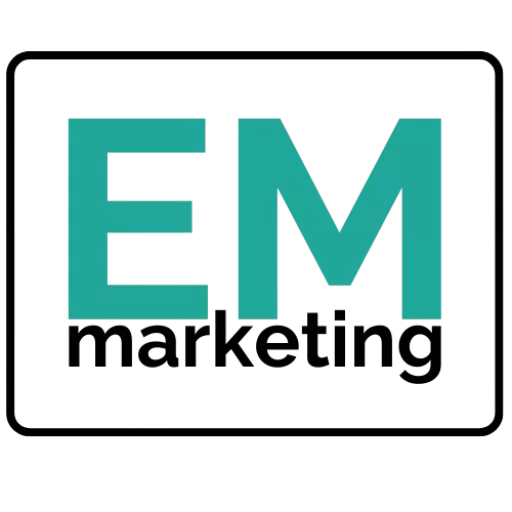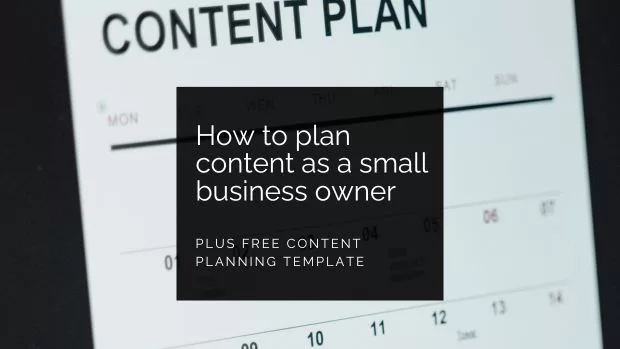Table of Contents
Introduction
Over the years, I’ve learnt that effective planning is the backbone of running a successful business. And guess what? The key to good marketing is planning too.
If you’re a small business owner looking for content planning tips, you’re in the right place. Here you’ll find my top tips for content planning based on the simple system I use.
Old-fashioned meets modern
Spoiler alert: planning doesn’t have to be done using the latest tech tools. While I’m always eager to try new software, I’ve realised that sometimes the old-fashioned methods work best.
I’ve tried a few tech tools for planning—Trello and Notion, to name just two—but they never quite clicked for me. The learning curve takes time, and frankly, I don’t have the bandwidth to master yet another platform when I’m already juggling websites, email platforms, social media, Canva, and more. I’m sure, as a small business owner trying to plan content, you know where I’m coming from.
As a visual person, I often start with Post-it notes on a board. Think of the evidence boards you see in crime shows—if they’re effective for solving murders, why wouldn’t they work for business? After that stage, I transfer everything to my content planning template.
But what is my content planning template? I hear you cry. It’s a simplified version of a marketing strategy and marketing plan.
How will this help with your marketing?
- You get a clear overview of what’s happening when.
- You can ensure your messaging is consistent across all channels.
- You can easily identify content to repurpose.
My simple planning system
A key part of successful marketing is consistency across all your channels, which is why I’m a big advocate for repurposing content. It strengthens your brand messages and keeps everything cohesive.
In my corporate days, we used a marketing laydown when launching a product. It was essentially a visual representation of everything happening across our marketing channels—a bit like a TV schedule. It gave us the big picture and helped us see how everything lined up, ensuring consistency. Because it worked well, I used the same principle for my business. My content planner allows me to see the big picture but also zoom in and manage my content in chunks—whether that’s weeks, months, or quarters. Here’s how it works.
Quarterly breakdown
- I divide each quarter of the year into separate worksheets within one Excel workbook.
Content planning
- I start by adding notable dates (like product launches, promotions, events and things like national holidays and awareness days). I then start planning my content across my marketing channels – website, email marketing, social etc. and fill in the schedule.
Headlines
- To keep things simple, I just use headlines for each content piece in the main planner. This gives me a quick view of what’s happening when without feeling overwhelmed.
Content detail
- In addition, I add the detail of each piece of content to a content detail tab in the workbook so I have a record of it and can keep track of what I’ve created and what I still have to create.
I know—it’s a slightly old-school approach, but this system has worked for me for years. If anything ever goes wrong with my platforms, I have a copy of everything I’ve created in my Excel planner.
Pro Tip: If it ain’t broke, don’t fix it! My method has proven effective, and I’m sticking with it.
A few more planning tips
While your content plan needs to be tailored to your business and objectives, there are some basic principles I suggest you follow.
Start by writing your marketing strategy
As a small business owner, developing a marketing strategy is crucial to building brand awareness, trust, and customer loyalty and ultimately growing your business. However, many small businesses associate the term “strategy” with large companies that have big budgets, but in simple terms, a marketing strategy defines the overarching long-term plan for achieving your goals. Start by writing your marketing strategy because understanding your audience and their needs is key to crafting content that works.
Plan your content but stay flexible
Planning makes content creation easier and more efficient. It lets you schedule content strategically. But don’t stress if life throws you a curveball—stay flexible! The same goes if something topical pops up that wasn’t in your plan; just adjust your plan and shift things around. Having a plan is better than having no plan.
Repurpose content across channels
Maximize your content’s impact by repurposing it! Research blog topics and choose one that aligns with your goals. Write a blog post for your website, then turn it into a social media post, create a Pinterest pin to drive more traffic, and use it in your email marketing. One piece of content working hard on multiple platforms—now that’s efficiency!
Keep going and record your results
Use metrics that link to your goals to measure your progress and adjust your strategy and plan where needed.
Want to try my simple planning system?
It’s a simple yet powerful way to plan your content, ensuring you repurpose content efficiently and maintain consistent messaging across all your marketing channels. You’ll be planning like a pro in no time!


Leave a Reply